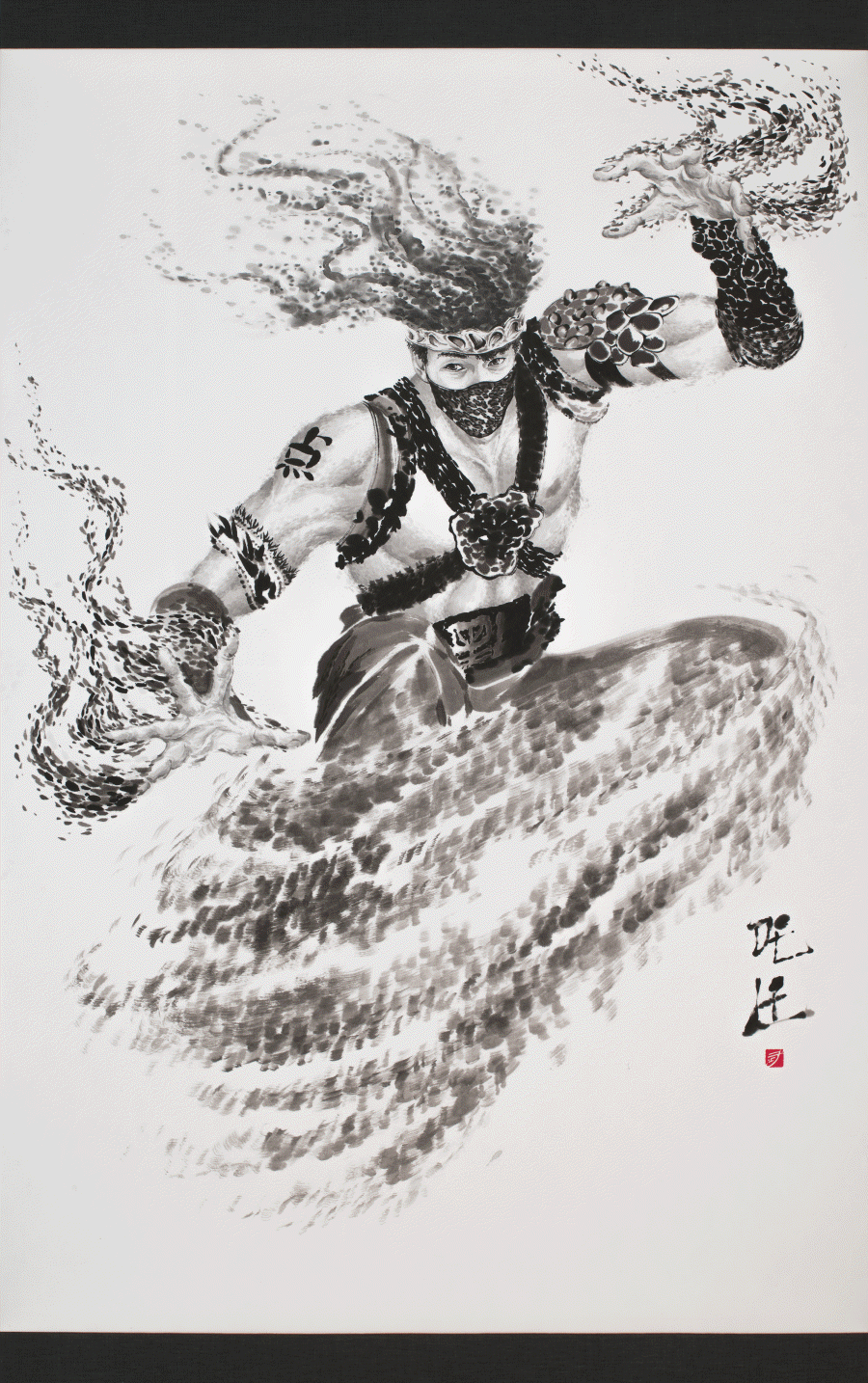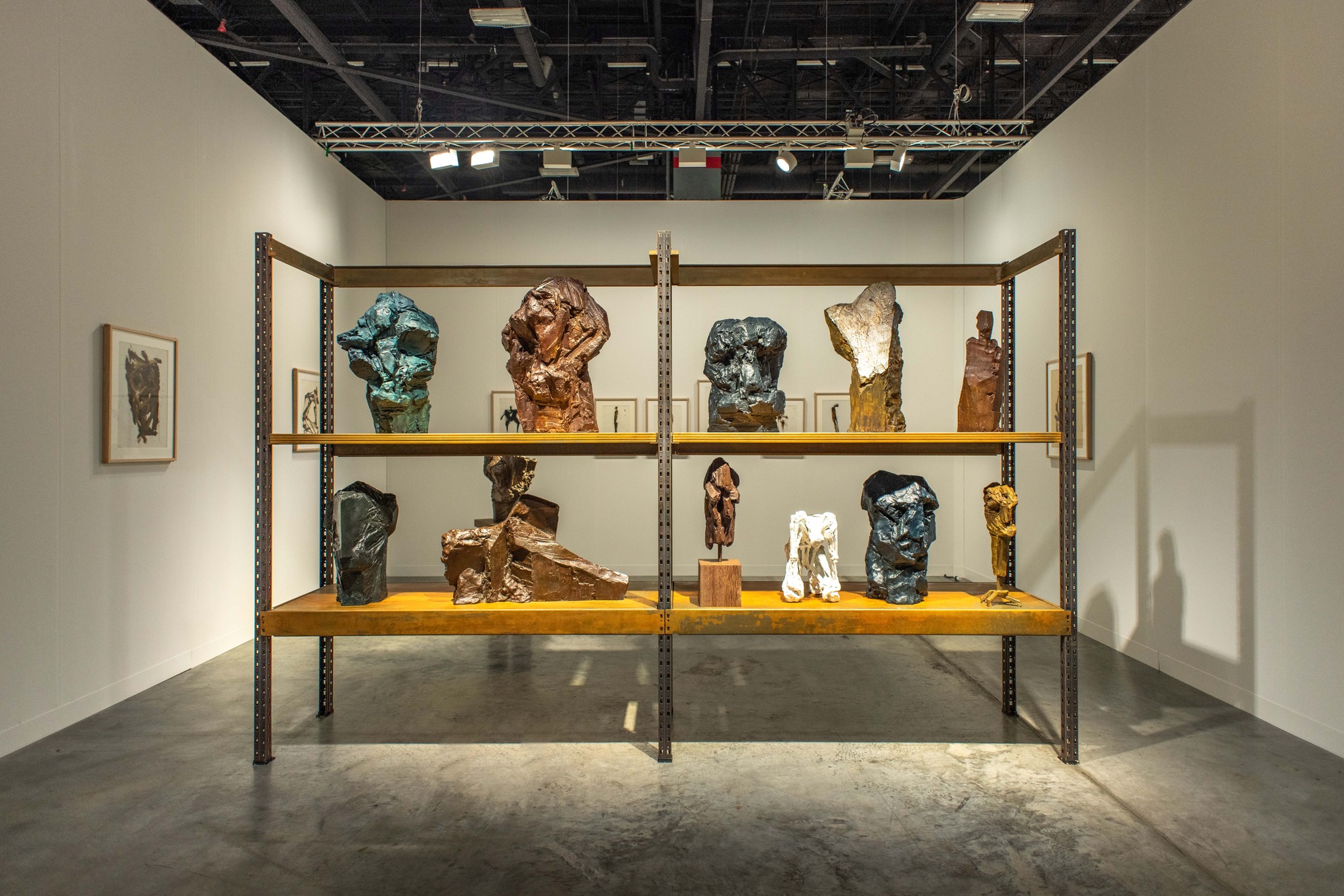Artists Lee Donggi, Son Donghyun, and Lee Yunsung utilize character elements from otaku culture in their work.

Lee Donggi x BTS J-Hope ‘Chicken Noodle Soup’ Cover Art Work.
TAKASHI MURAKAMI: MurakamiZombie, the artist’s major retrospective, opened on January 26, 2023, at the Busan Museum of Art, attracting an astounding 94,000 people within 35 days of its opening. Due to the large number of visitors, the museum extended the exhibition until April 16, a month longer than originally planned, so that more members of the public could enjoy the show. According to the museum, the exhibition attracted an average of 2500 visitors on weekdays and more than 4000 on weekends.
In addition to the fact that it was a solo exhibition of an internationally renowned superstar artist, the fact that Takashi Murakami’s work resonates with the tastes of the younger generation is what made the exhibition so popular.
Takashi Murakami is an artist who brings Japanese otaku culture and its forms, such as Japanese anime character figures and lolicon, into the context of contemporary art. He gained international fame for breaking down the boundaries between East and West, traditional and contemporary, and high culture and subculture through Superflat, a postmodern art movement.
Takashi Murakami’s artwork features several anime-like characters. He first presented DOB, a character that merges Sonic the Hedgehog and Doraemon, in a solo exhibition at SCAI The Bathhouse in 1994. Later, he created other notable characters, such as Tan Tan Bo and Murakami Flower. Through anime-like characters that exist only in a form that lacks narrative, the artist attempted to reflect the characteristics of contemporary art.
Otaku culture is one of the most famous forms of Japanese pop culture around the world. Until the 2000s, otaku culture was considered a subculture of social outcasts obsessed with manga and anime. The term “otaku” still has a negative connotation, but in contemporary popular culture, “otaku culture” refers to enthusiasts and hobbyists within various subcultures. Thus, its concept is much more fluid, constantly adding new meanings.
 Exhibition view of "TAKASHI MURAKAMI: MurakamiZombie" at the Busan Museum of Art. Photo: Studio Jeongbiso, Dongseok Park ©Takashi Murakami/Kaikai Kiki Co., Ltd. All Rights Reserved. Courtesy of the artist and Perrotin.
Exhibition view of "TAKASHI MURAKAMI: MurakamiZombie" at the Busan Museum of Art. Photo: Studio Jeongbiso, Dongseok Park ©Takashi Murakami/Kaikai Kiki Co., Ltd. All Rights Reserved. Courtesy of the artist and Perrotin.While otaku culture is centered around manga and anime, the focus of consumption primarily revolves around individual characters within the content rather than the narrative itself. The paper, Influence of Subculture on Japanese Contemporary Art, notes that affectionate feelings for anime, manga, and game characters with cute and erotic looks are the main motivation for consumption in otaku culture.
Character consumption in Korea has evolved in a variety of ways. And apart from otaku culture, character consumption has become an important factor among young Koreans. Today’s younger generation values self-expression and sees consumption as a way to express their identity. Therefore, they produce and consume a variety of characters to reflect their identity.
Some experts explain that the past boom in “bukae” (부캐, alternative characters) and the ongoing MBTI testing fad reflect today’s younger generation’s views on character consumption.
This trend can also be observed in contemporary art, where many young Korean artists incorporate elements reminiscent of manga and animations into their work. These art pieces have gained significant popularity among young collectors. Many art fairs and galleries in Korea that cater to younger Korean collectors feature works with pop culture references, such as anime characters.
Korean artists such as Ok Seung-chul and Qwaya serve as excellent examples. Korean artists such as Woo Kuk Won and Moon Hyeongtae, as well as Japanese artist Ayako Rokkaku, are some of the younger artists that have gained significant popularity in the Korean auction market.
Japanese culture, which had a significant impact on global popular culture between the 1990s and early 2000s, has also influenced many young Koreans. And numerous Korean artists who grew up and began working in this social context borrow various elements of Japanese otaku culture, especially characters, to create work in a Korean context.
Influenced by this culture, artists Lee Donggi, Son Donghyun, and Lee Yunsung utilize character elements from otaku culture in their work.
LEE DONGGI (b.1967)
 Lee Donggi, 'Atomaus,' 2017, Acrylic on canvas, 140 x 170 cm. Courtesy of the artist.
Lee Donggi, 'Atomaus,' 2017, Acrylic on canvas, 140 x 170 cm. Courtesy of the artist.Lee Donggi introduced Atomaus in 1993, a year before Takashi Murakami officially announced his DOB. This character takes center stage on an album cover for J-Hope, a member of the global boy band group BTS.
Atomaus embodies the persona of contemporary people. Atomaus is a new combination of Atom, a representative Japanese anime character, and Mickey Mouse, an American cartoon character.
Atomaus reflects the characteristics of Korea while rebelling against the authoritarian conventions of the older generation of Korean abstract painting. The character is a satire of the strong influence of cultural powerhouses, the United States and Japan, on South Korea, but it also reflects the country’s acceptance and fusion of different cultures.
This character also plays various personas in Lee’s paintings. Atomaus appears as a figure in a classic painting, a Buddha statue, or a famous rock star. The artist uses familiar and popular images of the character in a wide variety of contexts to portray the anxieties of modern life. It also reflects today’s people who occupy a number of different identities.
SON DONGHYUN (b. 1980)

Son Donghun, 'Dot Dot,' 2016-2017, Ink on paper, 76 x 51 in. Courtesy of the artist.
Artist Son Donghyun (b. 1980), who majored in Oriental painting, is best known for portraying contemporary pop culture icons using traditional art techniques. His portraits of Shrek, Batman, and Michael Jackson, painted with the Joseon portrait technique, once went viral across the internet.
Son’s paintings are easy to understand and fun to look at, but there are also many layers to his work. Beyond self-reflection, the artist incorporates theories of Oriental aesthetics into his work. Son creates portraits that reflect not only the outward appearance of a figure but also their personality and inner world, conveying the spirit of the figure in the painting. Son’s artwork serves as a reflection of his own personal history, infusing his pop culture image with specific characteristics that symbolize the memories of his youth.
Son’s characters take a step further. Just as in fandom culture, where fans create new creations based on original content, such as fanfiction or various design products, Son borrows the iconic works and techniques of classic Oriental painting to portray them as if they were pop culture heroes. Similarly to the Japanese otaku culture of “moe anthropomorphism,” artists give objects human-like characters. An example can be seen in Son’s pine tree paintings. In Oriental painting, the pine tree symbolizes the virtues of self-discipline and fortitude. The artist personifies these pine tree characters and depicts them as strong heroes.
LEE YUNSUNG (b. 1985)

Lee Yunsung, 'The Annunciation,' 2014, Oil on canvas, 117x91 cm, 194x261 cm , 117x91 cm. Courtesy of the artist.
Lee Yunsung (b. 1985) reinterprets motifs from Greco-Roman mythology or classical painting using Japanese manga and anime culture techniques. In his work, many classics appear in the form of cute, erotic “moe girls.”
An example of this can be seen in the work titled Cronos (2011). Hungry for power, Cronos (or Saturn), the god in Greek mythology, devoured his sons because a prophecy predicted that one of them would rise up against him. Lee created an anime-inspired painting based on Francisco Goya’s Saturn Devouring His Son (Saturno devorando a su hijo), created sometime between 1819 and 1823, that depicts the story.
The grotesque and horrifying images of Goya’s work are transformed into the grammar of anime, where a beautiful girl appears instead of a cruel male figure. The girl character holding the dismembered baby is more adorable than scary. Flesh and blood in the background are round and cute, creating a rather festive atmosphere. Lee’s work reinterprets classical images as images of a subculture shared by contemporary youth.
References
- K-ARTIST.COM
- 부산시립미술관(Busan Museum of Art), “무라카미 다카시: 무라카미좀비(TAKASHI MURAKAMI: MurakamiZombie)”
- 임근준(Chungwoo Lee), “이윤성 – ‘모에’의 안경을 쓰고 고전의 세계를 탐구하는 화가”
- 정신영(Jung Shinyoung), “일본 현대미술에 나타난 서브컬처의 영향 : 무라카미 타카시, 아이다 마코토, 나라 요시토모의 작품을 중심으로(Influence of Subculture on Japanese Contemporary Art)”‘














